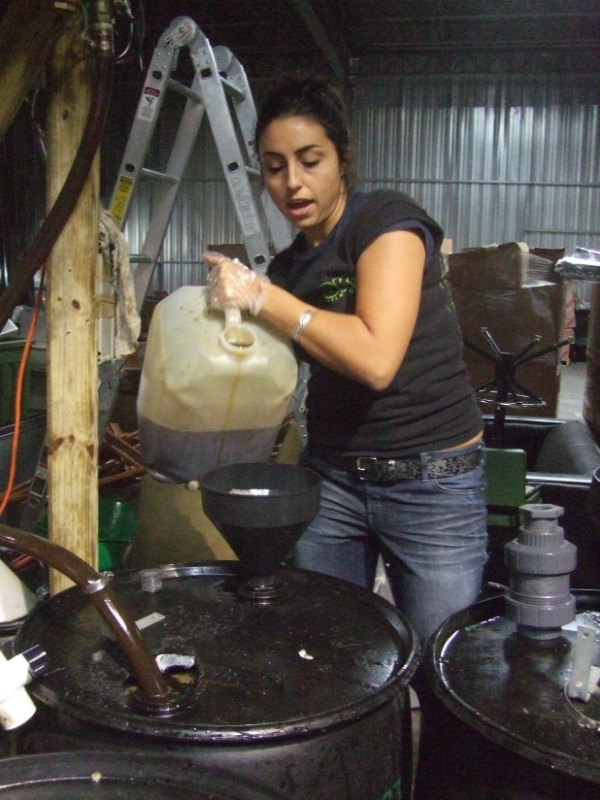Here is some information about our vehicles and why they are different from other cars.
Amira gets her grease on
THE FUEL
BIODIESEL v SVO
SVO/WVO
Straight Vegetable Oil (SVO) is oil that has not been altered or processed past the point of it being pressed and strained from its plant origin. Waste Vegetable Oil (WVO) is SVO that has been used already, such as in fryers at a restaurant or deli.
BIODIESEL
Biodiesel is Straight Vegetable Oil that has been chemically thinned using lye and methanol. Of course these chemicals are not ideal and are more caustic than the SVO/WVO method. However, because biodiesel is more accessible to more people, it is ultimately a greater hope as an alternative fuel and it is still infinitely better than using diesel or gasoline.
On Oahu, we are fortunate to be able to purchase biodiesel at the pump via Pacific BioDiesel. There are different grades of biodiesel: B99 is your best choice, B20 is second best.
How does vegetable oil power a car?
SVO can combust in a diesel engine just like diesel does. The main difference between putting SVO in your car instead of diesel is the viscosity of the SVO. Oil is heavier and thicker than diesel, and so for it to flow properly, there must be a heating element under the hood to thin out the oil. This is usually done with an inline heater. Additionally, most SVO conversions have an auxiliary pump to help retrieve the oil from the gas tank, and an additional fuel filter to ensure that the WVO was properly cleaned before being put in the tank. These conversions are best done on older cars, Mercedes years 1976 – 1984 are the best for the “do-it-yourself” conversion

